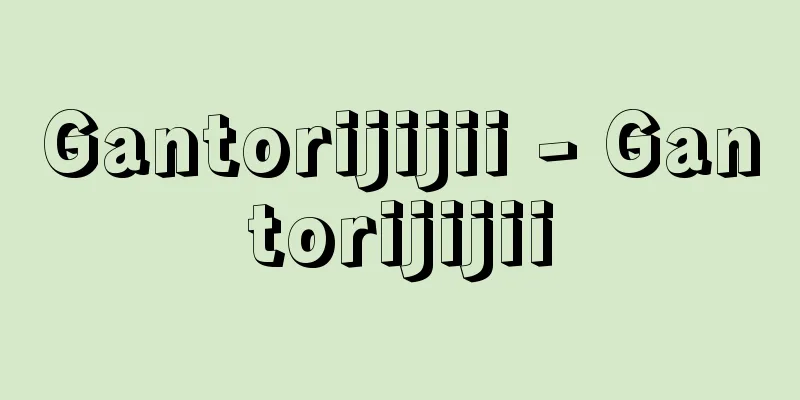Tenpo Famine - Tenpo no Kiki

|
A great famine that occurred between 1833 and 1837 (Tenpo 4-8). It is one of the three major famines of the Edo period, along with the Kyoho and Tenmei famines. From spring to summer 1833, cold damage hit all areas except the western part of the country. This caused extreme crop failure in the Tohoku and northern Kanto regions, resulting in a great famine. Rice prices soared, putting pressure on the lives of poor farmers in villages and the poor in cities. The shogunate and various feudal domains tried to provide relief by setting up relief huts, but there were still many people who starved to death or became ill. In response to merchants' price hikes to rice, riots and seditions broke out all over the country, demanding price reductions. As a result, various feudal domains made efforts to secure rice for consumption by prohibiting the transport of rice outside their territories, and the Akita and Nanbu domains, for example, purchased rice from Kaga and Echigo in an effort to prevent the recurrence of uprisings. The summers of 1834 and 1835 were relatively blessed with good weather, but production did not recover due to starvation and a decline in the workforce caused by illness. In 1836, cold weather again caused a severe crop failure, and rice prices soared. Moreover, as purchasing power for non-food items declined in cities, specialty product producing areas experienced a double recession of soaring rice prices and reduced production, plunging people into hardship. This led to a succession of riots in cities and rural areas across the country. In particular, in Kai (Kōshū Ikki) and Mikawa (Kamo Ikki), the uprisings escalated into major disturbances, leading to calls for "social reform," and some samurai began to criticize the policies of the shogunate and feudal domains. In particular, the Oshio Heihachiro Rebellion of 1837, together with the Morrison Incident of the same year, destabilized the power of the shogunate and feudal domains, and became the catalyst for the Tenpō Reforms. [Michio Aoki] [References] | | | | | |This painting depicts disaster victims being taken in and protected in a relief hut during a famine. Watanabe Kazan's "Relief for Rural Exiles" 1838 (Tenpo 9), owned by the National Diet Library . The Tenpo Famine Source: Shogakukan Encyclopedia Nipponica About Encyclopedia Nipponica Information | Legend |
|
1833~1837年(天保4~8)に起こった大飢饉。享保(きょうほう)、天明(てんめい)の飢饉と並ぶ江戸時代三大飢饉の一つ。1833年春から夏にかけ、西国を除く各地が冷害にみまわれた。このため東北・北関東地方で極端な不作となり大飢饉となった。米価は高騰し、村の貧農や、都市貧民の生活を圧迫した。幕府や諸藩は御救い小屋を設けたりして救済に努めたが、それでも膨大な餓死者や病人を出した。また商人らの米価つり上げに対して、値下げを求める一揆(いっき)や打毀(うちこわし)が各地で続発した。そのため、諸藩では米穀の領外搬出を禁止したりして飯米確保に努め、秋田・南部藩などは、加賀・越後(えちご)などから米を買い入れて一揆の再発防止に努めた。 1834年と1835年の夏は、比較的天候に恵まれたが、餓死者と病人による労働力減少などで、生産が回復しなかったところに、1836年ふたたび冷害にみまわれ大凶作となり、米価が暴騰した。しかも、都市で食糧品以外の購買力が減退したので、特産物生産地などでは、米価暴騰と生産減という二重の不況となり、人々を苦境に陥れた。このため、各地の都市と農村で打毀が続発した。とくに甲斐(かい)(甲州一揆)や三河(加茂(かも)一揆)では大騒動に発展し、「世直し」を求めるに至ったので、武士のなかから幕藩の政策を批判する者が出た。とりわけ1837年の大塩平八郎の乱は、同年のモリソン号事件とあわせて幕藩権力を動揺させ、天保(てんぽう)の改革の契機となった。 [青木美智男] [参照項目] | | | | | |飢饉の際、救小屋に収容され保護を受ける罹災民を描いたもの。渡辺崋山画『荒歳流民救恤図』 1838年(天保9)国立国会図書館所蔵"> 天保の飢饉 出典 小学館 日本大百科全書(ニッポニカ)日本大百科全書(ニッポニカ)について 情報 | 凡例 |
<<: Tempo calendar - Tenpo-reki
Recommend
Local song - Kyouka
Poetry from the Silla period in Korea. It is also...
Kankacho - Kangecho
〘Noun〙 (also "kankecho") A book that rec...
Lilium regale (English spelling) Lilium regale
…[Tetsuichi Yahara]. … *Some of the terminology e...
The Ten Provinces of Kanto
…The government office established by the Muromac...
Sachs, J.
…It is known that structures similar to vascular ...
petit jury
...In contrast, in countries with continental Eur...
Backed sandals - Backed sandals
...In the early Genroku period (1688-1704), vario...
Industrial accident - Industrial accident
An occupational accident that occurs when a worke...
Till, Emmett
Born: July 25, 1941 in Chicago, Illinois [Died] Au...
dandelion
...Intermediate forms are found in the areas betw...
Tayassu pecari (English spelling)
...A boar-like even-toed ungulate found in North ...
névé (English spelling) neve
…This kind of snow has intermediate properties be...
Anthicus marseuli (English spelling)
… [Chokane Hayashi]. … *Some of the terminology t...
Miharada ruins - Miharadaishi
Located in Miharada, Akagi Village, Seta District,...
Asamidorishiogusa - Asamidorishiogusa
...This life cycle pattern of homotypic alternati...


![Kizawa [village] - Kizawa](/upload/images/67cb508f1760a.webp)






